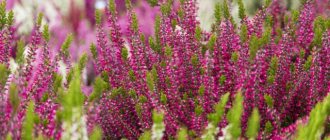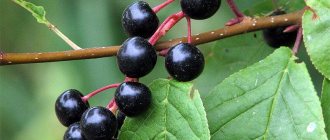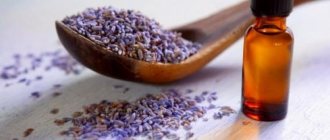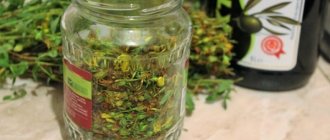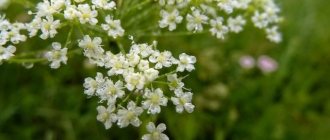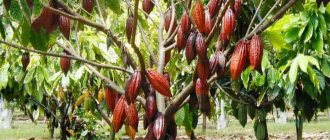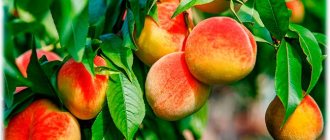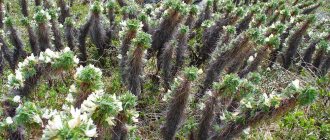Wintergreen is a perennial herbaceous crop. Wintergreen grass blooms in May, and fruit ripening begins in June. The plant is actively used in folk medicine. Most often, foliage and flowers are taken for these purposes, rarely - wintergreen root. Based on them, herbal decoctions, teas and alcohol tinctures are prepared.
It can also be found under other names - “pear”, “birch”, “pear”. To use the product correctly, you need to carefully study the medicinal properties and contraindications of wintergreen, which the Agronom.guru portal will help you figure out.
Wintergreen
Botanical description
Wintergreen grass has a thin root. The stems can grow up to 40 cm in height. Large leaves are characterized by a rounded shape. Small wintergreen flowers are painted in white or pinkish tones. The inflorescences are shaped like brushes. The fruits of the plant are box-shaped.
The crop blooms at the beginning of the summer season.
Wintergreen flowers do not attract attention with their appearance, but they have a fragrant aroma. The inflorescences are racemose and consist of many corollas.
Wintergreen fruits ripen at the end of summer. They look like spherical boxes, slightly flattened. This plant reproduces by seeds and shoots.
Fragrant wintergreen flowers
Chemical composition
The aerial part of wintergreen is rich in useful substances.
The herb contains:
- valuable essential oil;
- organic acids;
- magnesium;
- zinc;
- barium;
- gum.
Among the chemical elements there are tannins, vitamins, resins and phenols, monotropen and arbutin.
All parts of this plant contain the alkaloid andromedexin. A similar substance helps wine producers enhance the intoxicating effect of their products.
The plant contains many useful substances
Description of the herb and its chemical composition
Wintergreen rotundifolia is a perennial with a developed but fragile rhizome, from which adventitious aerial roots extend. Round petiolate leaves are located at the base of the stem, gathering into a rosette. The green leaves sit on petioles about 12 cm long. The leathery leaf blade with a glossy surface has a length of 3 to 6 cm.
The bare, erect stem of the grass is green, but you can see rare streaks of brown on it. The shoot can grow up to 30 cm in height. Flowers collected in racemose drooping inflorescences appear at the top of the shoot. The number of flowers in one brush is 8-15, their color can be white or bright pink. Depending on the number of flowers, the length of the brush can vary between 7-16 cm.
Due to the fact that the inflorescences of the plant resemble the flowers of a pear tree, the grass got its name.
As a result of flowering, fruits are formed in the form of a small box, which has the shape of a slightly flattened ball. Inside the box there is a large number of miniature seeds.
Wintergreen is included in the list of medicinal herbs due to the presence of biologically active substances in its composition:
- phenols;
- essential oils;
- vitamin C;
- steroids;
- glycosides;
- resinous compounds;
- iridoids;
- taraxerol;
- organic acids;
- Himaphilin;
- microelements;
- ericoline;
- flavonoids;
- arbutin;
- mucus;
- urson;
- gum;
- andromedotoxin.
The medicinal properties of the herb are used both by traditional healers and in evidence-based medicine.
See also:
Linden blossom - medicinal properties and contraindications, how to brew
